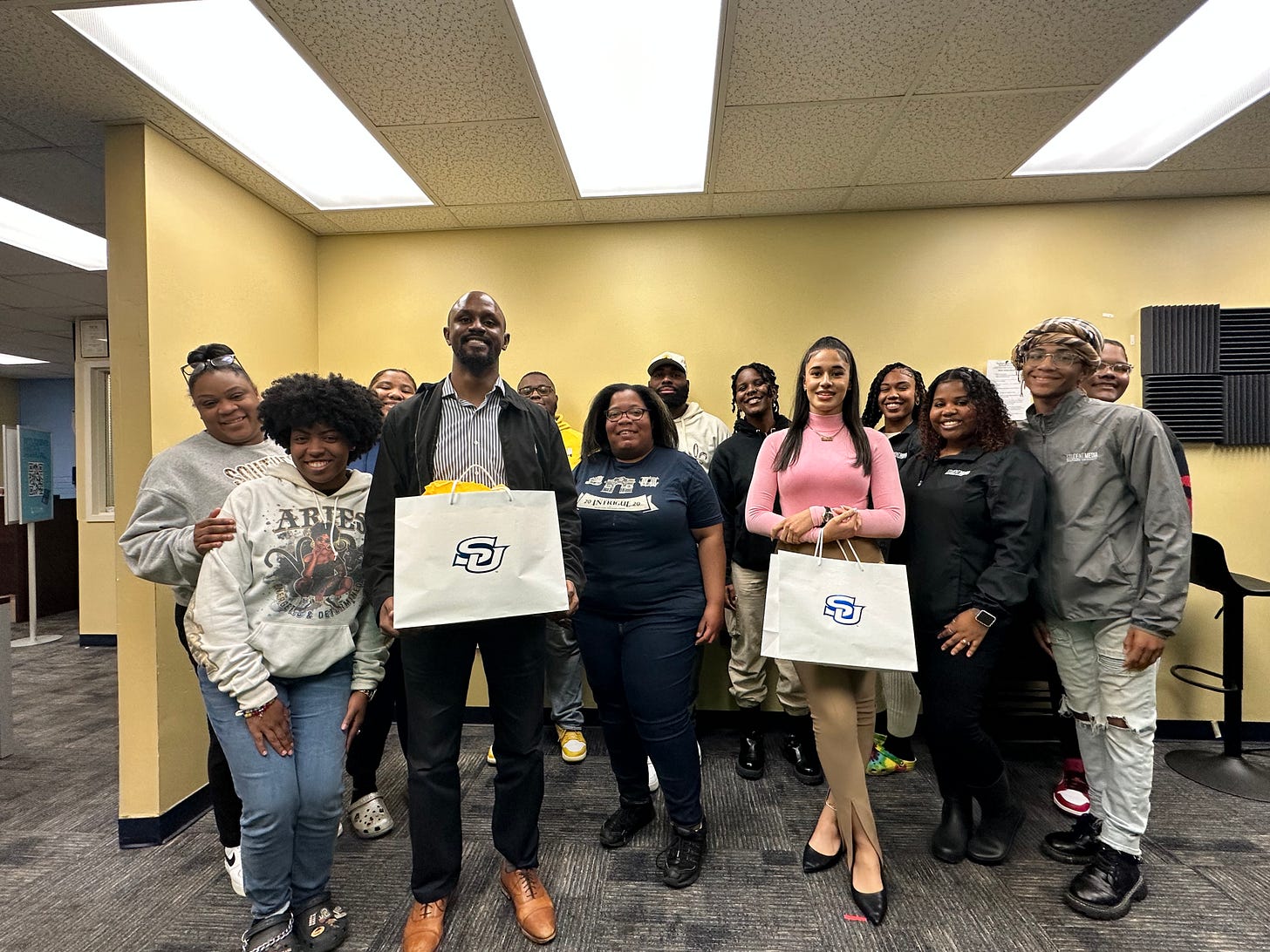Running student media at HBCUs isn’t easy. ReNews Project steps in
The Spelman Blueprint in Atlanta relaunches after six-year hiatus
In 2016, a 131-year-old student newspaper at Spelman College shut down due to a lack of student interest. Five years later, two students decided to breathe life back into it.
In 2022, The Spelman Blueprint officially relaunched, drawing in more than 55 applications as soon as the announcement hit.
“Honestly, at one point, it may be kind of emotional because you just never know what starting a newspaper on campus can do for other students,” said Kylar Gray, the paper’s co-editor-in-chief. “They were just basically saying that they need it somewhere to write.”
Yet, the journey wasn’t a walk in the park. Funding, journalistic training, management and technology support posed challenges.
The Blueprint isn’t alone; many face hurdles starting a student-run publication from scratch.
Enter the ReNews Project, on a mission to provide support and resources to student journalists at historically Black colleges and universities. Their goals: expand coverage, open newspapers and revive ceased publications.
Among the schools the group has worked with so far, besides Spelman, include Southern University and A&M College, Coppin State University and William Paterson University.
Wesley Wright, executive director of the ReNews Project, said while students at these schools may want to go into journalism, there isn’t a viable path for them due to the lack of student media and a dedicated journalism program.
“You'll be competing for jobs and internships with students, maybe, who went to bigger schools, or who have extensive student media experience and if you don't have it on campus, it's a lot harder,” said Wright, also assistant director of student media at Florida Atlantic University.
Accountability is another facet.
Wright said HBCUs often find themselves in news deserts, with no coverage of student governments, boards of trustees and administrators.
The ReNews Project steps in, providing nearly $10,000 worth of services and goods. This includes free racks for distribution, a one-year subscription to a content management system and memberships to professional associations for staffers and advisors.
At Spelman, where those interested in journalism usually have to cross-register with Morehouse College across the street, Gray said one of the challenges starting The Blueprint was building up a team and raising awareness of the paper on campus.
The ReNews Project helped The Blueprint with the website and the creation of the first print issue, in collaboration with the local paper Gainesville Times.
“My mission with this is because I feel like Spelman needed a student-led newspaper because our stories are important as Black women,” said Gray, a senior English major who wants to become a journalist. “To talk about our stories, to have a safe space for our stories, to be heard.”
The Blueprint aims for two issues per semester. Gray said the feedback has been supportive from both students and faculty.
The paper’s members also got to lead a keynote session and present their revived publication at the College Media Association Conference last year.
“I just feel like (the ReNews Project) just added that extra boost that we needed, that we were looking for,” Gray said.
At Southern in Baton Rouge where a newspaper already existed, the ReNews Project helps with providing in-person journalism counseling. The focus included interview approaches with public officials and public record requests.

Despite successes, student media faces high turnover, Wright said.
At Coppin State, student journalists reopened The Coppin Courier after more than two decades, but the publication has now shuttered again.
“We got them a nice website and everything, but the people who are attached to have graduated,” Wright said. “So now I’m waiting to get like who is the new type of people who would want to take on this endeavor.”
A former student leader of The Courier didn’t respond to an email request for comment.
Asked about the sustainability of the revived newspapers, Wright said most student papers could run themselves in the long term with older students guiding younger students and with help from faculty advisors.
“But there may be a scenario where we work with the school and two years later maybe they're down bad again or whatever, well, I don't mind that,” Wright said, noting that having a functioning newspaper, even for a short period, is good for a community.
“Yes, I'm bothered by it,” he added. “But right now, I don't see it that way. I see it as being able to help students who may not otherwise have these opportunities.”
Story Spotlight:
A peek into the experience of a student journalist at New College (Chloe Rusek/The Catalyst): The reporter’s semester-long attempt to get an interview with the new college chief, President Richard Corcoran, resulted in repeated denies — despite his appearances on national networks. The first-person narrative sheds light on a shift in the administration’s approach toward student journalists at New College, emphasizing a decline in transparency and accessibility compared to the previous administration.
Featured Opportunities:
The National News Literacy Week between Jan. 22-26 features multiple free events including a panel on how student journalists are helping to fill the gap in local news.
World Resources Institute is hosting a webinar on stories to watch in 2024 on Jan. 23.
The International Community and the Washington DC Pro chapter of SPJ are hosting a webinar on putting a local angle on global events on Jan. 23.
Entrepreneurial Journalism Creators Program at CUNY’s Newmark Graduate School of Journalism accepts applications until Feb. 2.
The New England First Amendment Coalition hosts a free “Campaign Reporting 101” webinar on Feb. 13.
The Alexia accepts applications for grants for student and professional photojournalists until Feb. 15.
The Journalism Institute at the National Press Club offers multiple scholarships with deadlines in February and April.








